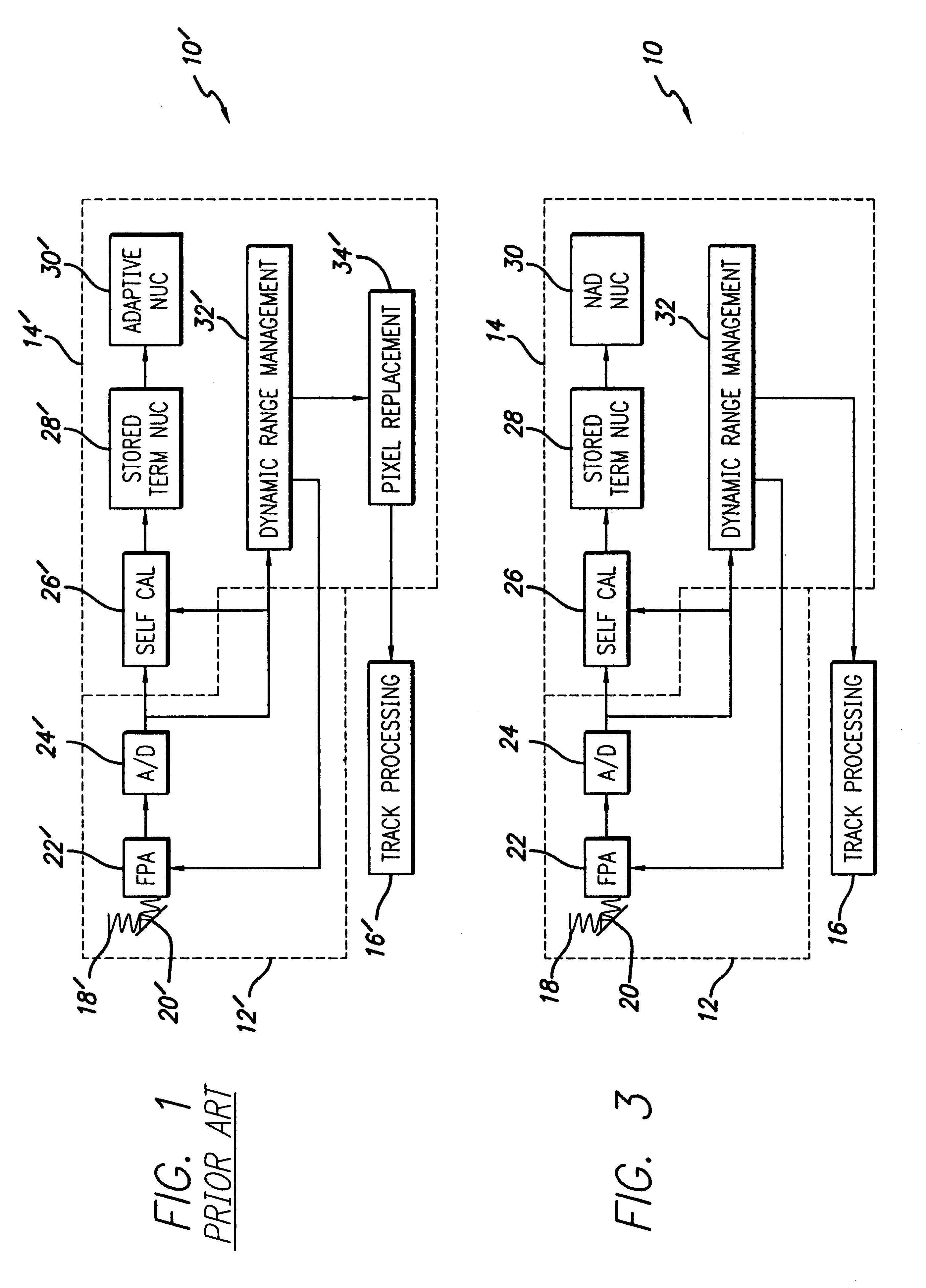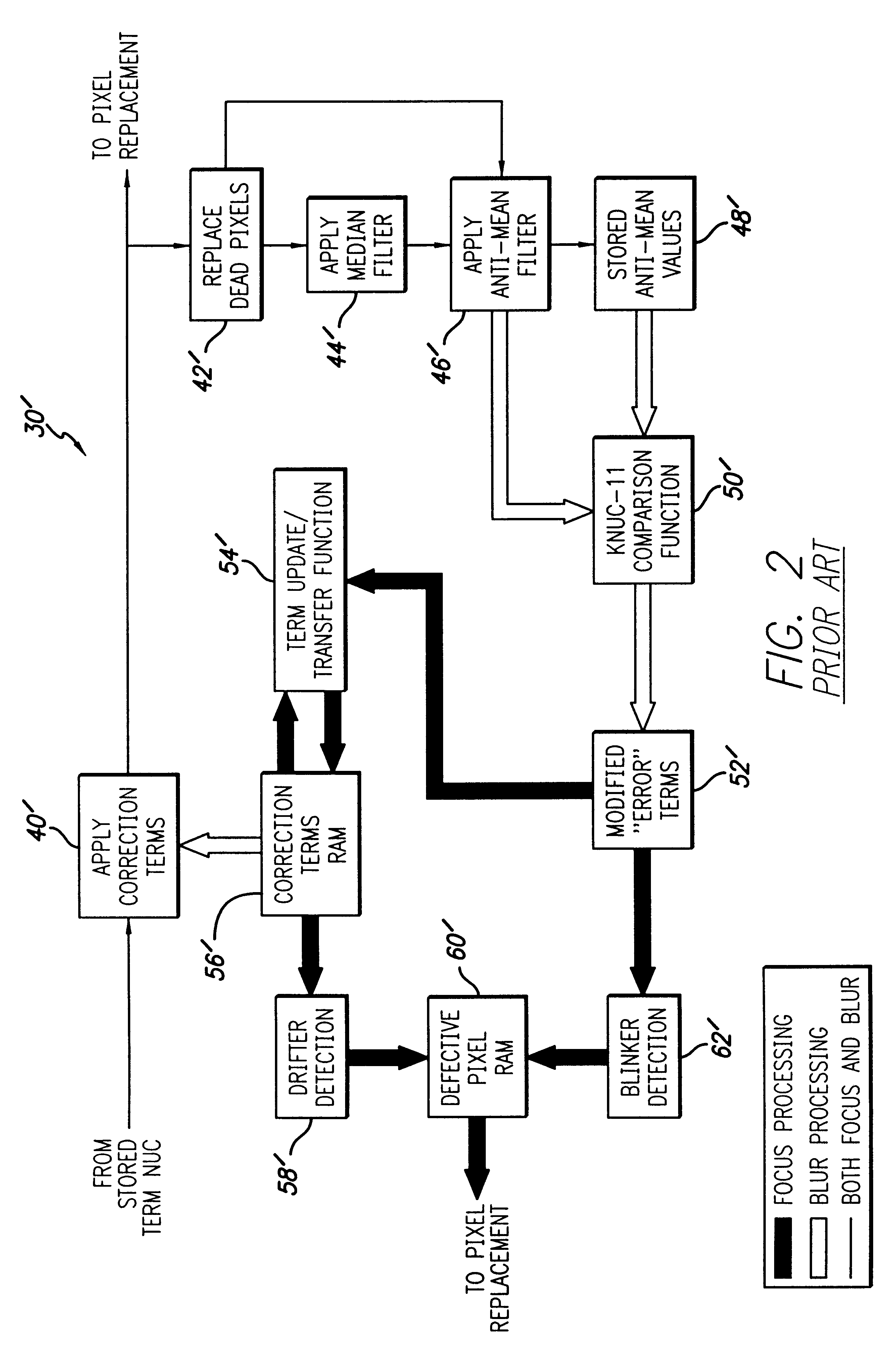Adaptive non-uniformity compensation using feedforward shunting and wavelet filter
a non-uniformity compensation and feedforward shunting technology, applied in the field of image and data processing systems and techniques, can solve problems such as spatial variation of fpa output, anomalies in focal plane arrays, and problems such as fixed pattern noise and problems,
- Summary
- Abstract
- Description
- Claims
- Application Information
AI Technical Summary
Problems solved by technology
Method used
Image
Examples
Embodiment Construction
Illustrative embodiments and exemplary applications will now be described with reference to the accompanying drawings to disclose the advantageous teachings of the present invention.
While the present invention is described herein with reference to illustrative embodiments for particular applications, it should be understood that the invention is not limited thereto. Those having ordinary skill in the art and access to the teachings provided herein will recognize additional modifications, applications, and embodiments within the scope thereof and additional fields in which the present invention would be of significant utility.
FIG. 1 is a block diagram of an infrared video processing system constructed in accordance with conventional teachings. The system 10' is implemented in hardware and software and includes an infrared camera 12'. The output of the video camera is processed by a video processing system 14' and a tracker 16'. Within the camera 12', infrared energy 18' from a scene ...
PUM
 Login to View More
Login to View More Abstract
Description
Claims
Application Information
 Login to View More
Login to View More - R&D
- Intellectual Property
- Life Sciences
- Materials
- Tech Scout
- Unparalleled Data Quality
- Higher Quality Content
- 60% Fewer Hallucinations
Browse by: Latest US Patents, China's latest patents, Technical Efficacy Thesaurus, Application Domain, Technology Topic, Popular Technical Reports.
© 2025 PatSnap. All rights reserved.Legal|Privacy policy|Modern Slavery Act Transparency Statement|Sitemap|About US| Contact US: help@patsnap.com



